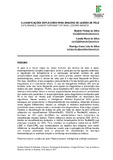| dc.relation | AGUGHASI, V.; MURALI, S.; DEEPU, R.; SHIVAMURTHY, R. C. ResNet-50 vs VGG-19 vs training from scratch: a comparative analysis of the segmentation and classification of pneumonia from chest X-ray images. Global Transitions Proceedings, [S.l.], v. 2, n. 2, p. 375–381, 2021. Disponível em: https://doi.org/10.1016/j.gltp.2021.08.027. Acesso em: 16 maio 2025.
ARAUJO, T.; ARESTA, G.; CASTRO, E.; ROUCO, J.; AGUIAR, P.; ELOY, C.; POLÓNIA, A.; CAMPILHO, A. Classification of breast cancer histology images using Convolutional Neural Networks. Plos One, v. 12, n. 6, e0177544, 2017. Disponível em: https://doi.org/10.1371/journal.pone.0177544. Acesso em: 02 mar. 2025.
BADER, F.; KOPRINKA, I.; SHATZ, S. et al. Explainable Artificial Intelligence for Skin Lesion Classification Using LIME and SHAP: a comparative study. Diagnostics, v. 13, n. 11, 1932, 2023. Disponível em: https://www.mdpi.com/2075-4418/13/11/1932. Acesso em: 16 mai. 2025.
BASHIR, A.; ALI, H. M.; AHMED, F.; et al. Skin cancer diagnosis using VGG16 and transfer learning: analyzing the effects of data quality over quantity on model efficiency. Applied Sciences, v. 14, n. 17, 7447, 2024. Disponível em: https://www.mdpi.com/2076-3417/14/17/7447. Acesso em: 17 abr. 2025. BRASIL. Ministério da Saúde. Exposição solar: saiba como se proteger e prevenir o câncer de pele, 05 jan. 2023. Disponível em: https://www.gov.br/saude/pt-br/assuntos/saude-brasil/prevencao-ao-cancer/dezembro-laranja-prevencao-e-deteccao-precoce-do-cancer-de-pele. Acesso em: 22 jan. 2025. BRASIL. Ministério da Saúde. Câncer de pele representa 30% de todos os tumores malignos registrados no país. 2025. Disponível em: https://www.gov.br/saude/pt-br/assuntos/saude-com-ciencia/noticias/2025/fevereiro/cancer-de-pele-representa-30-de-todos-os-tumores-malignos-registrados-no-pais. Acesso em: 30 maio 2025. FERNEDA, Edberto. Redes neurais e sua aplicação em sistemas de recuperação de informação. Ciência da Informação, Brasília, v. 35, n. 1, p. 25-30, jan./abr, 2006. Disponível em: https://www.scielo.br/j/ci/a/SQ9myjZWLxnyXfstXMgCdcH/?format=pdf&lang=pt. Acesso em: 4 mar. 2025. HAUG, C. J.; DRAZEN, J. M. Artificial intelligence and machine learning in clinical medicine. New England Journal of Medicine, v. 388, n. 13, p. 1201-1208, 2023. Disponível em: https://www.nejm.org/doi/full/10.1056/NEJMra2302038. Acesso em: 03 jan. 2025.
HE, K.; ZHANG, X.; REN, S.; SUN, J. Deep residual learning for image recognition. IEEE Conference on Computer Vision and Pattern Recognition, 2015. Disponível em: https://arxiv.org/abs/1512.03385. Acesso em: 16 mai. 2025. HOMA, Celina. Evaluating XAI algorithms in skin cancer classification: a path towards trustworthy AI systems. Trabalho de Conclusão de Curso (Bacharelado) – School of Engineering, Zurich University of Applied Sciences (ZHAW), Winterthur, 2023. Disponível em: https://digitalcollection.zhaw.ch/handle/11475/29936. Acesso em: 02 jun. 2025.
INCA. INSTITUTO NACIONAL DO CÂNCER. Estimativa de 2023: incidência de câncer no Brasil, 2023. Disponível em: https://www.inca.gov.br. Acesso em: 05 fev. 2025. ISIC. International Skin Imaging Collaboration Project, 2018. Disponível em: https://www.isic-archive.com/. Acesso em: 15 jan. 2025. IQBAL, A.; JAFFAR, M. A.; JAHANGIR, R. Enhancing brain tumour multi-classification using Efficient-Net B0-based intelligent diagnosis for Internet of Medical Things (IoMT) applications. Information, v. 15, n. 8, p. 489, 2024. Disponível em: https://www.mdpi.com/2078-2489/15/8/489. Acesso em: 19 abr. 2025.
LINARDATOS, P.; PAPASTEFANOPOULOS, V.; KOTSIANTIS, S. Explainable AI: a review of machine learning interpretability methods. Entropy, v. 23, n. 1, p. 18, 2021. Disponível em: https://www.mdpi.com/1099-4300/23/1/18. Acesso em: 24 jan. 2025. MAHBOD, A.; SCHAEFER, G.; WANG, C.; ECKER, R.; DORFFNER, G.; ELLINGER, I.Investigating and Exploiting Image Resolution for Transfer Learning-based Skin Lesion Classification, 2020 25th International Conference on Pattern Recognition (ICPR), Milan, Italy, pp. 4047-4053, 2021. Disponível em: https://doi.org/10.1109/ICPR48806.2021.9412307. Acesso em: 4 jun. 2025. MAHARANA, K.; MONDAL, S.; NEMADE, B. A review: data pre-processing and data augmentation techniques. Global Transitions Proceedings, v. 3, n. 1, p. 91–99, 2022. Disponível em: https://www.sciencedirect.com/science/article/pii/S2666285X22000565. Acesso em: 05 jan. 2025. MASCARENHAS, S.; AGARWAL, M. A comparison between VGG16, VGG19 and ResNet50 architecture frameworks for Image Classification. International Conference on Disruptive Technologies for Multi-Disciplinary Research and Applications, 2021. Disponível em: https://www.researchgate.net/publication/370467299. Acesso em: 16 mai. 2025. MARON, R. C. et al. Skin cancer classification via convolutional neural networks: systematic review of studies involving human experts. European Journal of Cancer, v. 156, p. 202–216, 2021. ISSN 0959-8049. Disponível em: https://www.sciencedirect.com/science/article/pii/S0959804921004445. Acesso em: 24 jan. 2025. MRIDHA, K.; UDDIN, M. M.; SHIN, J.; KHADKA, S.; MRIDHA, M. F. An interpretable skin cancer classification using optimized convolutional neural network for a smart healthcare system. IEEE Access, v. 11, p. 41003–41018, 2023. Disponível em: https://doi.org/10.1109/ACCESS.2023.3269694. Acesso em: 4 jun. 2025. MUMUNI, A.; MUMUNI, F. Data augmentation: a comprehensive survey of modern techniques. Array, v. 16, p. 100258, 2022. Disponível em: https://doi.org/10.1016/j.array.2022.100258. Acesso em: 7 jan. 2025.
MURDIYANTO, R.; ASYHARI, A. T.; PRAMONO, R. E.; REZAL, M. Performance comparison of CNN and ResNet50 for skin cancer classification using U-Net segmented images. Indonesian Journal of Data and Science, 2024. Disponível em: https://www.researchgate.net/publication/387582441. Acesso em: 16 mai. 2025. NIGAR, N.; UMAR, M.; SHAHZAD, M. K.; ISLAM, S.; ABALO, D. A deep learning approach based on explainable artificial intelligence for skin lesion classification. IEEE Access, v. 10, p. 113715–113725, 2022. Disponível em: https://doi.org/10.1109/ACCESS.2022.3217217. Acesso em: 4 jun. 2025. PEREIRA, K. et al. Fatores que influenciam a aceitação de Tecnologias de Inteligência Artificial na Saúde. Revista Gestão & Saúde, v. 13, p. 02–20, 2022.
Disponível em: https://www.researchgate.net/publication/378383096. Acesso em: 29 jan. 2025. SALIH, Ahmed M. et al. A perspective on explainable artificial intelligence methods: SHAP and LIME. Artificial Intelligence Systems, 2024. Disponível em: https://doi.org/10.1002/aisy.202400304. Acesso em: 11 abr. 2025. SILVA, T. A. M. et al. Aprendizado de máquina aplicado ao diagnóstico de câncer de pele. Anais do Congresso Brasileiro de Inteligência Computacional (CBIC). 2021. Disponível em: https://sbic.org.br/wp-content/uploads/2021/09/pdf/CBIC_2021_paper_55.pdf. Acesso em: 26 jan. 2025. SOCIEDADE BRASILEIRA DE DERMATOLOGIA. Melanoma. 2023. Disponível em: https://www.sbd.org.br. Acesso em: 03 jan. 2025. VIMALA, B. B.; SRINIVASAN, S.; MATHIVANAN, S. K. et al. Detection and classification of brain tumor using hybrid deep learning models. Scientific Reports, v. 13, p. 23029, 2023. Disponível em: https://doi.org/10.1038/s41598-023-50505-6. Acesso em: 16 mai. 2025.
WORLD HEALTH ORGANIZATION. Skin diseases as a global public health priority: Executive Board Decision EB156(24). 2025. Disponível em: https://apps.who.int/gb/ebwha/pdf_files/EB156/B156_(24)-en.pdf. Acesso em: 30 maio 2025. XU, F. et al. Explainable AI: A Brief Survey on History, Research Areas, Approaches and Challenges. International Conference on Artificial Intelligence for Industries (AI4I), 2019. Disponível em: https://www.researchgate.net/publication/336131051. Acesso em: 29 jan. 2025. | pt_BR |


